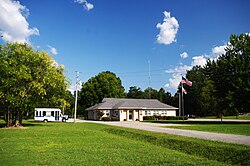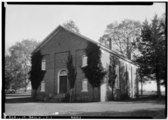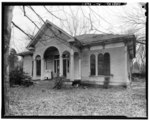Leighton, Alabama | |
|---|---|
 Leighton City Hall | |
 Location of Leighton in Colbert County, Alabama. | |
| Coordinates: 34°41′59″N87°31′51″W / 34.69972°N 87.53083°W | |
| Country | United States |
| State | Alabama |
| County | Colbert |
| Area | |
• Total | 2.16 sq mi (5.59 km2) |
| • Land | 2.16 sq mi (5.59 km2) |
| • Water | 0.00 sq mi (0.00 km2) |
| Elevation | 584 ft (178 m) |
| Population (2020) | |
• Total | 665 |
| • Density | 308.30/sq mi (119.02/km2) |
| Time zone | UTC-6 (Central (CST)) |
| • Summer (DST) | UTC-5 (CDT) |
| ZIP code | 35646 |
| Area code | 256 |
| FIPS code | 01-42160 |
| GNIS feature ID | 2406001 [2] |
Leighton is a town in Colbert County, Alabama, United States. It is part of the Florence - Muscle Shoals Metropolitan Statistical Area known as "The Shoals". At the 2020 census, the population was 665. Leighton has been hit by several tornadoes in the 2000s, including a damaging EF2 on May 8, 2008, that was caught on tape flipping over many cars and damaging buildings.



